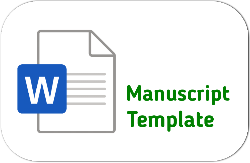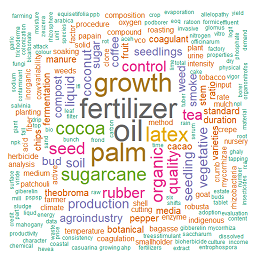Strategi Pengembangan Agroindustri Kopi di Kabupaten Kerinci
DOI:
https://doi.org/10.25181/jaip.v8i2.1480Keywords:
agroindustry, agribusiness, AHP analysis, Strategy, SWOTAbstract
Coffee is one of the plantation products with significant importance in the economy of Kerinci Regency, and several obstacles have been reported in agroindustry development. This study is focused on designing a strategy to develop the industry in the region. The study was conducted in Kerinci Regency from January 2017 until October 2017. The data was collected by observation, questionnaires, and in-depth interviews through Focus Group Discussion (FGD). In addition, research analysis used internal and external factor methods, internal and external matrices (IE Matrix), and SWOT matrices. The result show the value of the internal and external factors obtained to be 2,759 and 2,888, respectively. When mapped, the IE matrix value is in cell V (five). However, the suitable strategies are the growth and stability strategy, essential for market penetration and product development. Based on AHP analysis, the three main strategic priorities to be applied are land expansion (0,230), guidance and facilitation of the market information (0,178), and infrastructure improvement (0,124)Downloads
References
Abdullah, N. (2017). Strategi Pengembangan Kopi Secara Optimal untuk Meningkatkan Nilai Tambah Ekonomi Wilayah di Kabupaten Mamasa Sulawesi Barat. Unpublished undergraduate thesis, Institut Pertanian Bogor, Bogor.
Chandra, D., Ismono, R. H., & Kasymir, E. (2013). Prospek perdagangan kopi robusta indonesia di pasar internasional. Jurnal Ilmu-Ilmu Agribisnis, 1(1), 10-15.
David, F. R. (2009). Manajemen Strategi (Konsep). Jakarta (ID): Salemba Empat.
Dinas Perkebunan dan Peternakan. (2018). Potensi Produksi Kopi di Kabupaten Kerinci. Dinas Perkebunan dan Peternakan Kabupaten Kerinci.
Fadhil, R., Maarif, M. S., Bantacut, T., & Hermawan, A. (2017). Model strategi pengembangan sumber daya manusia agroindustri kopi Gayo dalam menghadapi masyarakat ekonomi ASEAN. Jurnal Manajemen Teknologi, 16(2), 141-156.
Global Agricultural Information Network [GAIN]. (2019). Indonesia Coffee Annual Report. Jakarta (ID): USDA Foreign Agricultural Service.
International Coffee Organization [ICO]. (2019). Historical data total production by all exporting countries. Retrieved August 27, 2019, from http://www.ico.org/prices/po-production.pdf.
International Coffee Organization [ICO]. (2019). Supply surplus weighs on global coffee prices. Retrieved August 27, 2019, from https://icocoffeeorg.tumblr.com/search/consumption%20coffee.
Haggar, J., Soto, G., Casanoves, F., & de Melo Virginio, E. (2017). Environmental-economic benefits and trade-offs on sustainably certified coffee farms. Ecological Indicators, 79, 330-337.
Irawati, D. (2006). Understanding the triple helix model from the perspective of the developing country: A Demand or A Challenge for Indonesia Case Study. MPRA Paper No. 5829, posted 20 November 2007.
Mojo, D., Fischer, C., & Degefa, T. (2016). The determinants and economic impact of membership in coffee farmer cooperatives: recent evidence from rural Ethiopia. Journal of Rural Studies, 50, 84-94.
Nalurita, S, Asmarantaka, R. W, Jahroh, S. (2014). Analisis dayasaing dan strategi pengembangan agribisnis kopi Indonesia. Jurnal Agribisnis Indonesia, 2(1), 63-74.
Rangkuti, F. (2016). Analisis SWOT: Teknik Membedah Kasus Bisnis. Jakarta (ID): PT Gramedia Pustaka Utama.
Saaty, T. L. (2001). Decision Making for Leaders. Pittsburgh (US): RWS Publication.
Sitanggang, J. T. N., & Sembiring, S. A. (2013). Pengembangan potensi kopi sebagai komoditas unggulan kawasan agropolitan Kabupaten Dairi. Jurnal Ekonomi dan Keuangan, 1(6), 33-48.
Suandi. (2014). Kajian Prospek Penanaman Kopi Arabika di Kabupaten Kerinci. Program Pascasarjana. Universitas Jambi.
Sudjarmoko, B. (2013). Prospek pengembangan industrialisasi kopi Indonesia. SIRINOV, 1(3), 99-110.
Syarif, R., & Halid, H. (1993). Teknologi Penyimpanan Pangan. Laboratorium Rekayasa Pangan. Bogor: PAU Pangan dan Gizi, Institut Pertanian Bogor.
Tolinggi, W., & Gubali, H. (2018). Agro Science Techno Park, Kajian Rintisan Kawasan. Edisi ke-1. Gorontalo: Ideas Publishing.
Tominanto. (2012). Sistem pendukung keputusan dengan metode analytical hierarchy process (AHP) untuk menentukan prestasi kinerjadokter pada RSUD Sukoharjo. Jurnal Ilmiah Rekam Medis dan Informatika Kesehatan, 2(1), 1-5.
Downloads
Published
How to Cite
Issue
Section
License
Copyright (c) 2020 Dina Yuliasty Lamefa, Sukardi, Sapta Raharja

This work is licensed under a Creative Commons Attribution-ShareAlike 4.0 International License.
Authors who publish with Jurnal Agro Industri Perkebunan agree to the following terms:
Authors retain copyright and grant the Jurnal Agro Industri Perkebunan right of first publication with the work simultaneously licensed under a Creative Commons Attribution License (CC BY-SA 4.0) that allows others to share (copy and redistribute the material in any medium or format) and adapt (remix, transform, and build upon the material for any purpose, even commercially) with an acknowledgment of the work's authorship and initial publication in Jurnal Agro Industri Perkebunan.
Authors are able to enter into separate, additional contractual arrangements for the non-exclusive distribution of the journal's published version of the work (e.g., post it to an institutional repository or publish it in a book), with an acknowledgment of its initial publication in Jurnal Agro Industri Perkebunan. Authors are permitted and encouraged to post their work online (e.g., in institutional repositories or on their website) prior to and during the submission process, as it can lead to productive exchanges, as well as earlier and greater citation of published work.


























